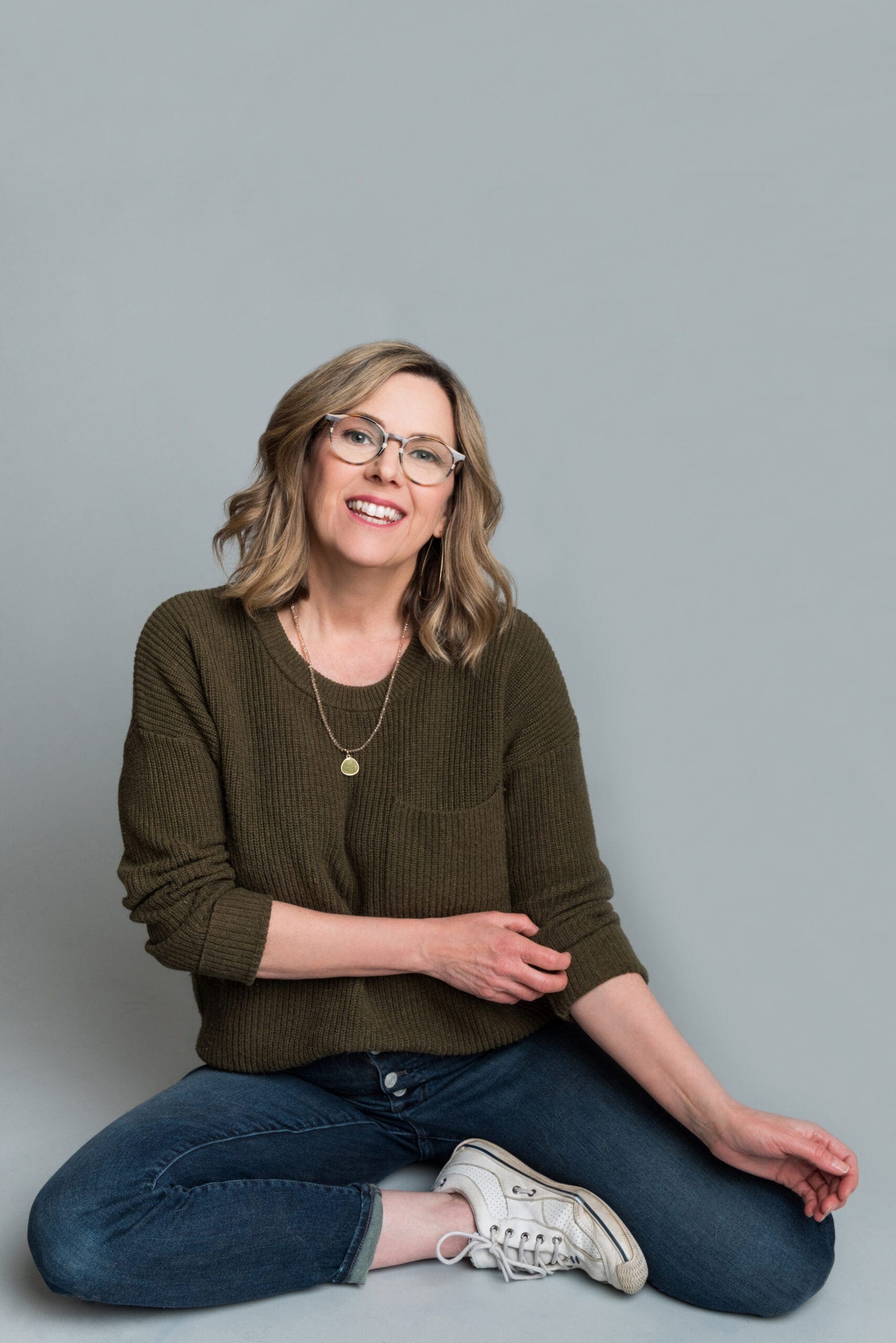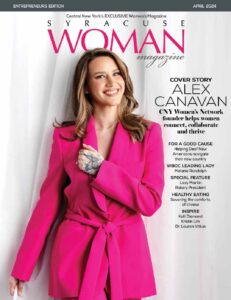The Journey to Active Joy
By Lorna Oppedisano | Photography by Alice G. Patterson
“This business is really about people, a lot more than most people realize,” said Agi Letkiewicz, founder of sustainable clothing brand Active Joy.
When Agi was in high school, she spent her Saturdays hanging out at the mall. It wasn’t the trends that attracted her to the clothing; it was a focus on self expression.
After beginning her career in the fashion industry in London, she decided to quit her dream job, feeling there was something else she wanted to try. Taking a sabbatical, she and her wife, Marines Piney Letkiewicz, backpacked around the world.
Between new experiences and conversations with friends, Agi began to realize what she wanted to do: create Active Joy, a new sustainably sourced and ethically manufactured direct-to-consumer activewear brand.
Now, just about a year and a half after beginning her journey into entrepreneurship, Agi has a successful pre-sales campaign for her first product under her belt and ideas for the future.
“I’m really excited to see how it evolves,” she said, “and I don’t 100-percent know what that’s going to look like yet.”
Venturing off the beaten path
Agi’s parents emigrated to the United States from Poland when she was very young. Growing up in Central New York, Agi learned about building success from her family. Both engineers, her parents instilled in her the skill and importance of taking calculated risks.
“What I’ve been able to observe about their life is that they weren’t so concerned about taking a straight path,” she explained. “They were fine taking risks and trying new things and seeing where things landed.”
Agi attended college at Northeastern University, a time that nurtured her entrepreneurial spirit. Senior year, she spent every weekend practicing business cases for a competition in which her group eventually won second place, she remembered with a laugh.
Having already caught the travel bug at a young age — her family frequently flew back to Poland to visit family — Agi decided to accept a job in England after college. Two weeks after graduation, she packed up a couple suitcases and moved to London.
The position — working as a clothing buyer in London and traveling across Europe — was her dream job. Eventually, though, she knew it was time to follow a different path.
“The day that I decided to leave that job, I literally thought that I was going to throw up in the trashcan in my boss’ office,” she recalled. “It was the hardest thing that I’ve ever had to do, to leave that.”
Taking a sabbatical to travel is a common concept in Europe, so her bosses understood and encouraged her to explore.
“I’m glad that I did it,” Agi said. “Taking a few steps away and being able to see it from a wider perspective, I was able to identify a little bit more easily what I actually wanted to do as my next step.”
Making a sustainable impact
As Agi and Marines began to travel across southeast Asia, Australia and New Zealand, Agi thought about the retail world. She realized two things. On one hand, stores and malls were closing; on the other, she explained, democratization was happening.
“With the internet, there are so many tools available now where you can start a brand and start a company,” she said. “It’s never been easier to start a product-based company. It’s hard to keep one going, but it’s really easy to start.”
She added that manufacturers were becoming more open to working with smaller brands and accepting smaller minimum orders.
“There’s this opportunity to throw your hat in the ring,” she said.
So, Agi started to think about tossing her hat in, saying “this is what I believe in” and seeing what happened.
As their adventures unfolded, the idea grew. When she and Marines met friends in Indonesia, things started to fall into place. Conversation helped push Agi’s ideas forward.
She did more research on how the fashion industry impacted the world. Her findings led her to a conclusion: she didn’t want to focus on inventory turnover or participate in the race to the lowest price. Agi wanted Active Joy to follow sustainable and ethical practices and wanted to be able to trace every step of her supply chain.
And she wanted to make clothing for those interested in a minimalist style.
After having pared down from a fashion buyer’s closet full of clothes to a 50-liter backpack, she realized there were very few items from her wardrobe in London she actually thought about, let alone missed, while traveling.
Agi decided to start her company, Active Joy, with one essential item: reversible leggings.
“I wanted to make something really versatile to capture that minimalist mindset that I was going for,” she said. “And I wanted to make activewear, so that felt like a natural place to start.”
Building a brand and a team
After returning home, Agi got started working on two aspects of her business: the backend, which included things like legal and accounting, and product development.
Though she’d had years of experience working in the industry, she had to figure out a lot of the small pieces as she built her brand from the ground up.
She found help and support in online networks, like IFundWomen, the platform on which she eventually launched her pre-sales campaign, as well as locally through organizations and programs like SCORE, the WISE Women’s Business Center, Women Business Opportunities Connection and the Thincubator in Utica. Agi also found support in the people she worked with.
“It’s really, really been about people for me,” she said. “All the people in my supply chain, I’m super excited about. Every single one, I’m super excited about, which is amazing. We’re partners in this business.”
As with any creative process, there were hiccups along the way that forced Agi to shift her pre-sales campaign launch date a couple times.
Eventually, when she was preparing to launch on June 1 — about 14 months after she’d started the process — Agi was told the factory she’d planned to work with couldn’t do the stitch she needed.
Agi had gone through the whole process — designing the concept, ordering the comfortable and reversible fabric made from recycled yarn and researching the stitch that would make the leggings comfortably reversible.
“I literally thought, ‘This is going to fail at the last stage,’” Agi said.
She had a few alternative plans in mind, but following any of them would mean sacrificing the idea of a reversible, versatile pair of leggings. After all the time and energy she’d spent, she didn’t want to give up on that goal.
So, she started making calls.
By this time, the strong network of people Agi had collaborated with were more than willing to help. Eventually, she learned from another activewear entrepreneur about a factory that could complete her order.
The process was back on track and she launched her campaign on June 14.
“In the sustainable fashion space, people are so cooperative with each other,” Agi said. “It’s actually much more open than the conventional fashion space, which is awesome.”
The future of Active Joy
After a successful monthlong pre-sales campaign — garnering enough financial support to create the first production run of Active Joy leggings — Agi has shifted her focus to getting the product made, building out marketing and sales, and the future of her brand.
Set to launch her website and general sales at the end of the year, Agi hopes to get into a good rhythm and launch more products throughout the next 12 months. She has ideas for versatile tops and long-sleeve jackets, but wants to get to know her customers’ needs better before making any concrete plans for future products.
She’d like to eventually see her sales predominantly online, which would let her offer the most competitive price point she can. She sees that online space as a place for her customers to come together.
“That’s the biggest goal, because it really is about people,” Agi said. “I want to continue to be able to support my supply chain, support USA manufacturing, support sustainability in the fashion industry and be able to share that with people, and have my customers be able to share that amongst themselves in a community.” SWM





